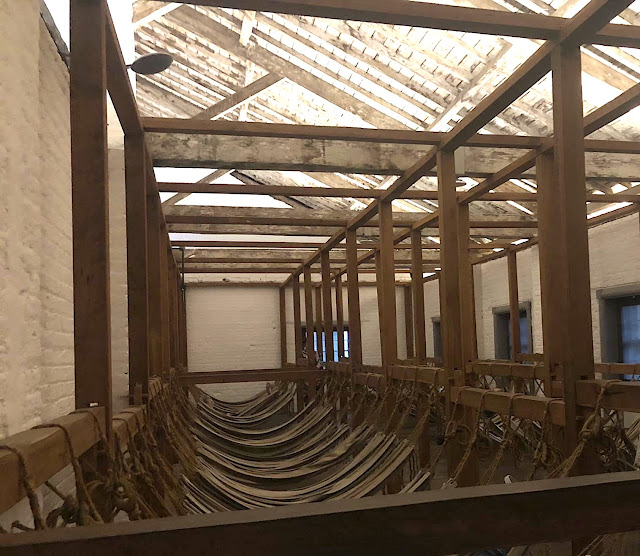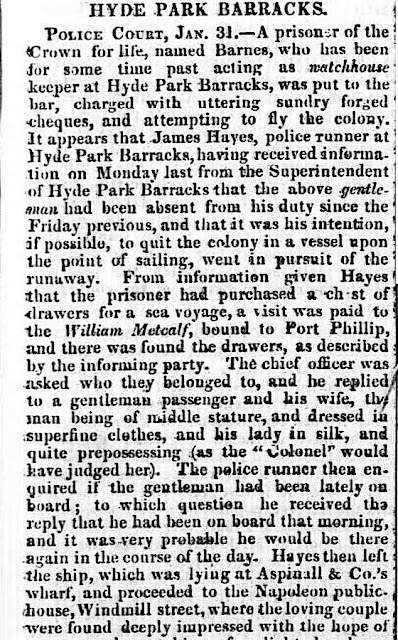Hyde Park Barracks, was built from 1811 to 1819 to house convict men and boys.
Convict architect Francis Greenway designed the building during the time of Governor Macquarie.
Greenway was the architect of St. James' Church, the old Benevolent Asylum, the Court-House, the Military Hospital (Fort-street 'School), the Macquarie Tower and Lighthouse, the Circular Quay Commissariat Store, and about of 200 other buildings in Sydney, Parramatta, Liverpool, Campbelltown, and more.
With three storeys to hold 800 convicts, where convicts slept in the dormitories strung up with hammocks, the barracks soon housed 1400 men at any one time, many who were allocated to public works of the colony.
In 1840, convict transportation to New South Wales ceased, and the barracks became a Female Immigration Depot. The remaining convicts were sent to Cockatoo Island.
Within the grounds of the barracks, other government offices were built, including the Government Printing Office(1848–56), the Court of Requests (1856–59), the Vaccine Institute (1857–86) and the District Court for Sydney (1858–1976).From 1862 to 1886, the Asylum for Infirm and Destitute Women was located on the barracks top floor. Both the Female Immigrant Depot and asylum were managed by Matron Lucy Applewhaite-Hicks, from 1862, who lived on the second floor with her family.
 |
| Matron Lucy Applewhaite Hicks, c.1870-1875, SLNSW |
 |
| Hyde Park Immigration Barracks, Sydney, 1871,Museums of History NSW - State Archives Collection |
In 1886, Hyde Park Asylum closed and, from 1887, became the centre of the NSW judiciary and government departments.
The Hyde park Barracks is now a museum.
Step back in time and explore the Hyde Park Barracks, a child friendly place with many interactive exhibits. Dress-up in the colonial or convict clothes or rest in a convict hammock.
Hours: Open ⋅ Closes 6 pm · More hours
Phone: (02) 8239 2311
Photos
 |
| This blue and white stripped Indian cotton shirt was found under the floorboards on level three of the Hyde Park Barracks, Sydney |
 |
| Asylum inmates clothing, Hyde Park Barracks, Sydney, NSW |
 |
| See how convicts slept in their quarters just under 200 years ago (in hammocks) Hyde Park Barracks, Sydney, NSW |




